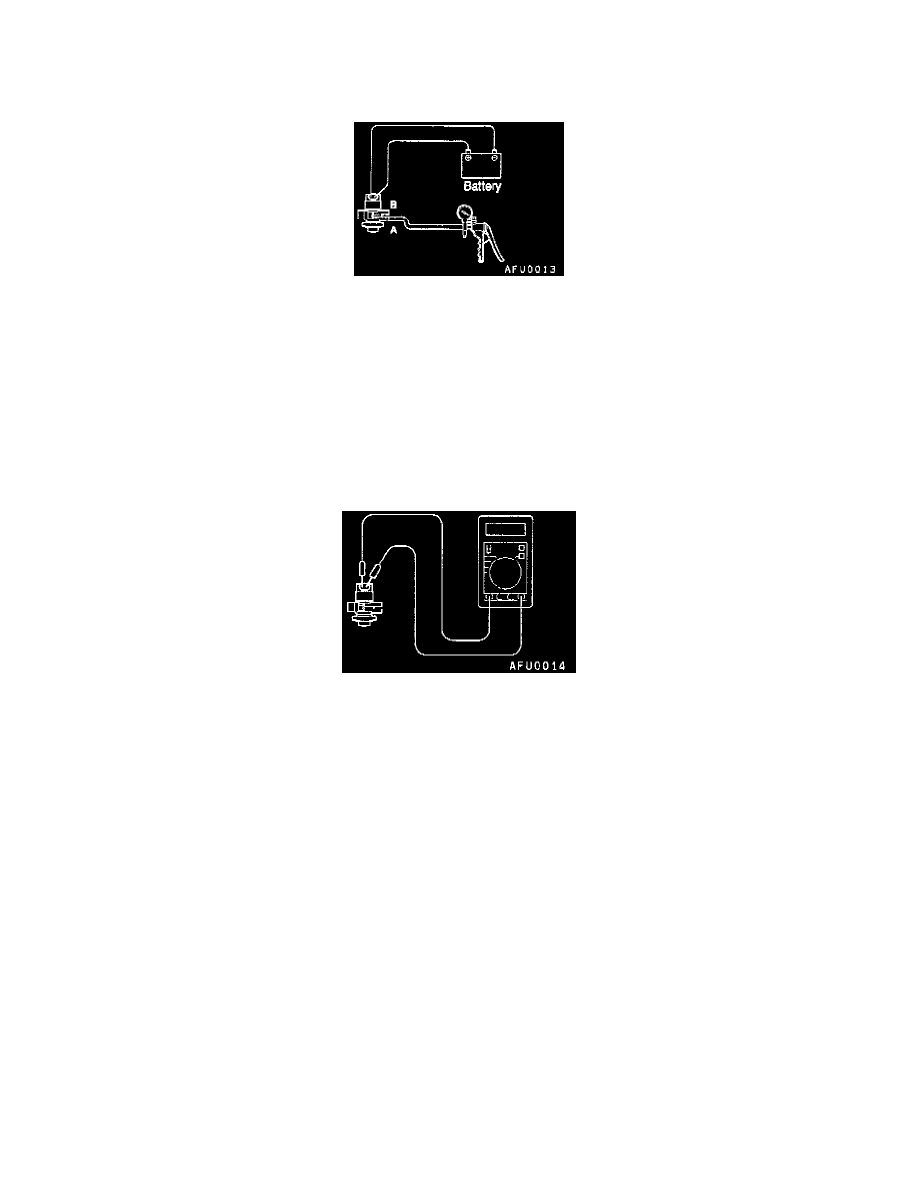Neon L4-2.0L DOHC (1996)

Canister Purge Solenoid: Initial Inspection and Diagnostic Overview
EVAP Purge Solenoid Inspection
EVAPORATIVE EMISSION PURGE SOLENOID INSPECTION
NOTE: When disconnecting the vacuum hose, place an identification mark on it for proper re-connection.
1. Disconnect the vacuum hose from the solenoid valve.
2. Disconnect the harness connector.
3. Connect a hand vacuum pump to nipple (A) of the solenoid valve.
4. Check airtightness by applying a vacuum with voltage applied directly from the battery to the purge control solenoid valve.
Battery Voltage / Normal Condition.
Applied ................................................................................................................................................................................................. Vacuum Leaks
Not Applied ................................................................................................................................................................................. Vacuum Maintained
5. Measure the resistance between the terminals of the solenoid valve.
-
Standard value: 25-35 ohms [at 20°C (68°F)]
Helpful Information
Circuit F12 splices to feed the Antilock Brake System (ABS) control module, PCM, Electronic EGR Transducer (EET) solenoid, leak detection pump,
and the Torque Converter Clutch (TCC) solenoid. The F12 circuit also connects to a bus bar in the Power Distribution Center (PDC) that supplies
voltage to the coil side of radiator fan relays, A/C clutch relay, and fuel pump relay.
In the START or RUN position, the ignition switch connects circuit A1 from the fuse block and circuit A21. Circuit A1 connects to battery voltage and
is protected by a 30 Amp fuse in the PDC.
